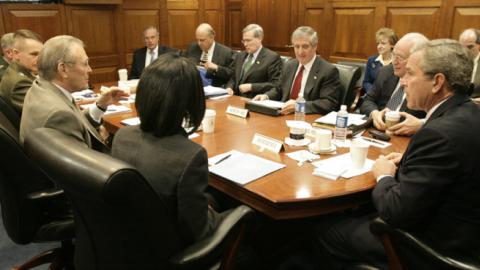After the first success of Operation Iraqi Freedom in 2003 a growing insurgency began to destabilize Iraq. Yet neither the Pentagon nor the field commanders seemed to know how to respond. Stephen Hadley, President Bush’s national security adviser, decided to ask two staffers on loan to the National Security Council—Meghan O’Sullivan from State and William Luti from the Pentagon—to come up with options. According to John Gans in “White House Warriors,” Mr. Hadley asked Mr. Luti, a Navy veteran: “If you had a clean sheet of paper, what would you do?” After crunching the numbers, Mr. Luti argued, with Ms. O’Sullivan’s help, that there were enough U.S. troops available to add up to five brigades to the American contingent in Iraq—that is, 20,000 to 25,000 soldiers. These fresh troops, Mr. Luti and Ms. O’Sullivan felt, could stabilize the country and even begin to reverse the situation on the ground.
Thus “the surge” was born—the campaign that set the table for a new counterinsurgency strategy led by Gen. David Petraeus. It was a classic example of the NSC’s capacity for quick outside-the-box thinking at times of crisis, in this case with spectacular results.
Read the full article in the Wall Street Journal "here":https://www.wsj.com/articles/white-house-warriors-review-a-bullpen-for-…















